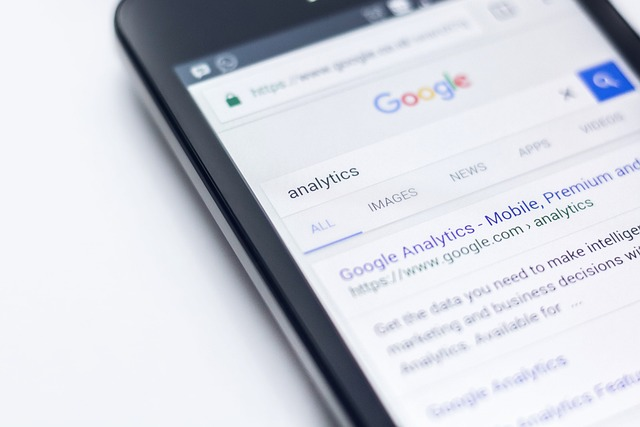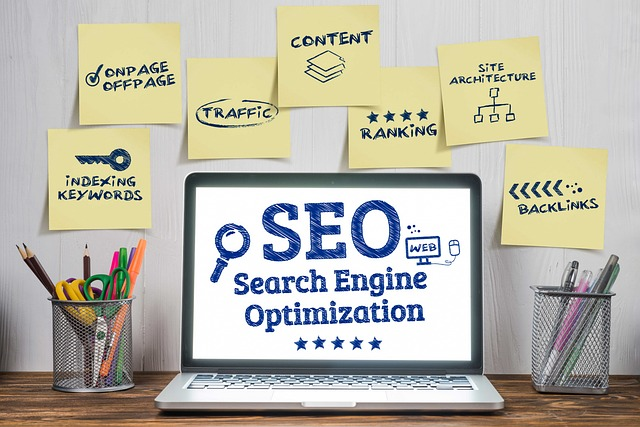Welcome to the insightful world of Search Engine Marketing (SEM), a pivotal strategy in today’s digital marketing landscape. SEM, often called pay per click, is a dynamic approach that enhances online visibility and drives targeted traffic directly to your service or website. Unlike other advertising mediums, SEM positions your offerings on the search engine results page, where potential customers are actively seeking solutions. Which of the Following is a Benefit of Search Engine Marketing SEM? Dive into this article to discover how SEM can transform the way you reach and engage with your audience in connection with other advertising medium.
Increased Visibility and Brand Awareness
Search Engine Marketing (SEM) serves as a powerful tool for businesses to secure a prominent position in search engine results pages. This strategic placement is crucial, as it ensures that a company’s offerings are visible to potential customers actively searching for related services or products.
The timing of this visibility is key; by appearing at the exact moment when potential customers are seeking information, businesses can effectively capture their attention with other ads.

The impact of SEM on brand recognition is significant. When a brand consistently appears in search engine results, it not only increases the likelihood of attracting web traffic but also enhances brand recall. This repeated exposure in search results fosters familiarity and trust among potential customers. Unlike other advertising mediums, SEM allows for such targeted and timely visibility, making it a cornerstone of effective online marketing strategies and service create websites.
Targeted Advertising
SEM’s ability to target specific demographics, locations, and interests is one of its biggest advantages. This precision in targeting means that businesses can craft campaigns that reach the right audience with tailored ads. By utilizing relevant keywords and ad formats, SEM ads can be customized to align with the specific preferences and habits of a target audience.

This level of customization leads to ads that resonate more deeply with viewers, increasing the likelihood of engagement and conversion. As a result, companies using SEM often witness higher conversion rates and a more substantial return on investment (ROI) compared to other advertising models.
The efficiency of SEM campaigns, such as Google Ads and Bing Ads, lies in their ability to leverage data about customer preferences and online behaviors, ensuring that each ad reaches customers who are most likely to be interested in the offered products or services. This targeted approach, a hallmark of digital marketing, underscores the benefit of search engine marketing in reaching potential customers effectively and efficiently.
Cost-Effective Advertising
Search Engine Marketing (SEM) stands out as a cost-effective advertising solution, primarily due to its flexible budgeting options. Businesses, regardless of size, can set specific budgets for their SEM campaigns, ensuring that their marketing expenses align with their financial capabilities. This level of control over spending is a significant advantage, especially for small businesses or those with limited advertising budgets.

The pay-per-click (PPC) model, a key component of SEM, offers distinct benefits for both small and large businesses. Under this model, companies pay only when users click on their ads, making it a lot cheaper and more efficient than traditional advertising methods.
This approach ensures that businesses are spending money on ads that are actually reaching potential customers, maximizing the return on their investment.
Furthermore, SEM allows for the continuous tracking and optimization of campaigns. Digital marketers can analyze the performance of their ads in real time, making adjustments to improve their effectiveness and cost-efficiency. This ability to fine-tune campaigns on the fly ensures that businesses are not only reaching their target audience but doing so in the most cost-effective manner possible.
Immediate Results for Search Engine Results Pages
One of the most compelling advantages of SEM is its ability to deliver immediate visibility and traffic from search engine results pages. Unlike search engine optimization (SEO), which can take months to show results, SEM campaigns can increase traffic and visibility as soon as they go live. This immediacy is particularly beneficial for businesses looking to quickly boost their online presence or promote time-sensitive offers, especially when combined with local SEO services that target nearby customers searching for solutions (for example, Titan Containers storage in Dublin) in real time.

Businesses can swiftly gauge the impact of their SEM efforts. The immediate influx of website traffic following the launch of an SEM campaign provides tangible evidence of its effectiveness.
This rapid feedback allows companies to assess the success of their strategies and make data-driven decisions to enhance their marketing efforts.
Moreover, SEM offers the flexibility to adjust strategies in real time. If certain aspects of a campaign are not performing as expected, adjustments can be made promptly to improve results.
This dynamic nature of SEM is essential for staying ahead in the competitive digital marketing landscape, enabling businesses to respond quickly to market trends and customer behaviors.
Measurable and Data-Driven
Search Engine Marketing (SEM) is renowned for its measurable and data-driven nature, offering businesses detailed analytics and performance metrics. This aspect of SEM allows companies to track a variety of key metrics, including conversions, click-through rates, and ad rank. Such comprehensive data is crucial for understanding how well different elements of an SEM campaign are performing.

The ability to track these metrics enables businesses to make informed decisions based on actual performance data. For instance, by analyzing which keywords or ad groups are driving the most conversions or which SEM ads are yielding the highest click-through rates, businesses can optimize their strategies for better results.
This data-driven approach is a cornerstone of digital marketing, allowing for continuous improvement and refinement of SEM campaigns.
Competitive Advantage to Get Potential Customers Actively
In today’s crowded online marketplace, SEM offers a significant competitive advantage. By effectively using SEM strategies, businesses can stand out among competitors on search engine results pages. This visibility is not just about being seen; it’s about being seen first.
Outranking competitors in search results can lead to a higher click-through rate, as potential customers actively looking for services or products are more likely to click on top-listed results.

This advantage in visibility can translate into increased market share and customer acquisition. When a business appears prominently displayed in search engine results, it not only captures the attention of potential customers but also establishes a sense of trust and authority in its niche.
This can be particularly beneficial for businesses in industries where several companies are competing for attention. By leveraging SEM, businesses can effectively reach potential customers, outshine competitors, and secure a more dominant position in their market.
Integration with Other Marketing Channels
Search Engine Marketing (SEM) is not an isolated strategy; it significantly complements and enhances other marketing channels.
The integration of SEM with social media, content marketing, and search engine optimization (SEO) creates a synergy that amplifies the overall effectiveness of digital marketing efforts. For instance, the content developed for SEO purposes can be promoted through SEM ads, while social media insights can inform more targeted SEM campaigns.

This holistic approach to digital marketing is crucial. By aligning SEM strategies with other channels, businesses can create a cohesive and consistent message across all platforms. This integration ensures that all marketing efforts are working in tandem, leading to a more comprehensive reach of potential customers. Whether it’s using insights from social media to refine SEM ad copy or leveraging organic search results to inform paid advertising strategies, the interplay between these channels can lead to more effective and efficient marketing campaigns.
Long-Term Sustainability
SEM plays a pivotal role in the long-term growth and sustainability of a business. By consistently attracting traffic through paid advertisements on search engine result pages, businesses can build and maintain a strong online presence.
This enduring presence is key to establishing a robust customer base, as it ensures that the business remains visible to potential customers over time, with customer data analytics playing a crucial role in understanding customer behavior and preferences to maintain that visibility effectively.

The potential for long-term sustainability through SEM lies in its adaptability and the need for continuous optimization. Staying up-to-date with industry trends and adapting campaigns accordingly is essential for maintaining relevance and effectiveness in a rapidly changing digital landscape.
For companies competing in crowded markets, the ability to quickly adjust text ads, refine landing pages, and respond to changing customer habits can be the difference between staying ahead or falling behind.
Moreover, SEM’s ability to provide several benefits, such as reaching customers through different types of ads and optimizing for both paid and organic results, makes it a versatile and sustainable choice for businesses.
The correct answer to achieving long-term success in digital marketing often lies in the ability to effectively integrate SEM with other advertising mediums, ensuring a comprehensive and sustainable approach to reaching and engaging customers. Which of the Following is a Benefit of Search Engine Marketing SEM? All of them!
Conclusion on Which of the Following is a Benefit of Search Engine Marketing SEM
Search Engine Marketing (SEM) stands as a formidable tool in the arsenal of modern digital marketing, offering a multitude of benefits that can significantly propel a business’s growth and success. By leveraging the vast reach of search engines and the targeted precision of ads on search engine results pages, SEM provides an unparalleled opportunity to connect with customers actively seeking services or products.
The versatility of SEM, functioning as both a standalone strategy and in synergy with other advertising mediums, allows businesses to create a comprehensive marketing approach. Whether it’s through the pay-per-click model, which ensures cost-effectiveness, or the adaptability of SEM campaigns to align with changing consumer habits, SEM offers a dynamic and responsive advertising model.
Businesses looking to stay ahead in the competitive digital landscape should consider implementing SEM strategies.
Not only does it enable them to reach customers effectively, but it also provides valuable insights through data-driven decision-making. The landing page optimization, ad customization, and the ability to track and adjust campaigns in real-time are just a few aspects that underscore SEM’s potential.
So, Which of the Following is a Benefit of Search Engine Marketing SEM?
In conclusion, the continuous evolution of digital marketing underscores the importance of staying informed and adaptable. SEM, with its ability to reach targeted audiences and generate measurable results, is a critical component for any business aiming to enhance its online presence and drive growth.
By embracing SEM and its various facets, businesses can unlock new opportunities and pave the way for sustained success in the digital realm.
